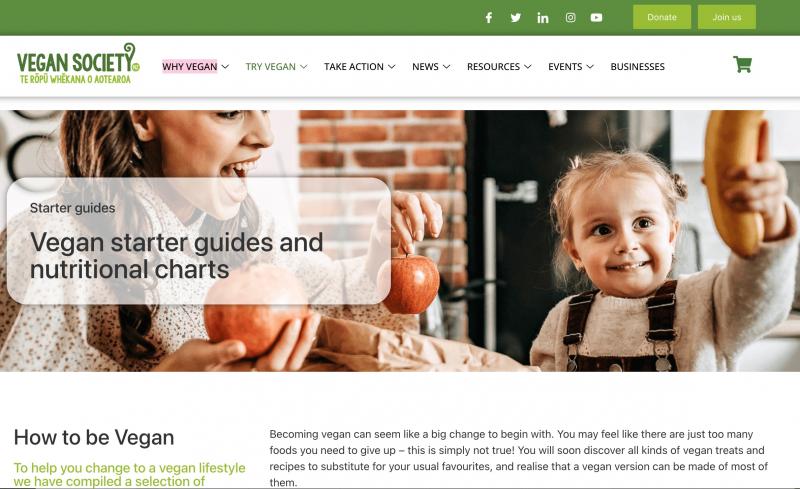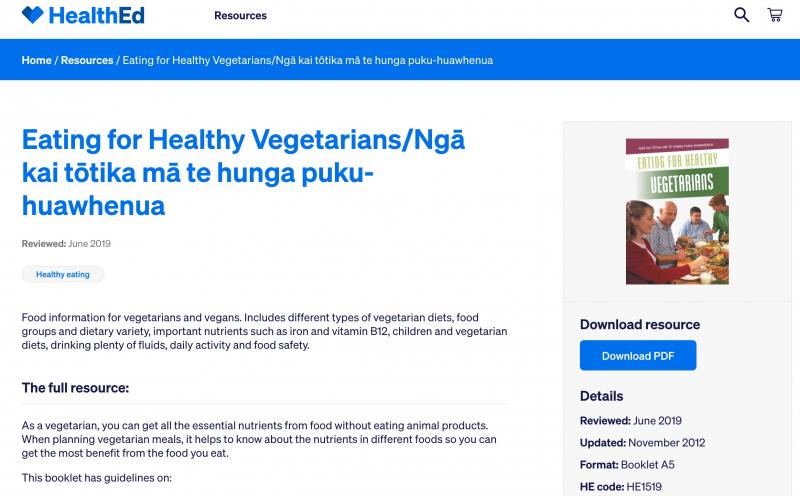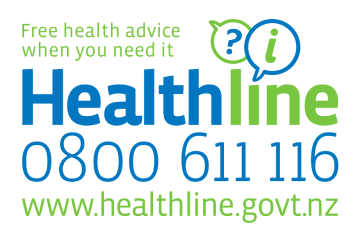Vegetarian & Vegan Eating In Children
Vegetarian & Vegan Eating In Children
A vegetarian eating pattern can be healthy for tamariki (children) and rangatahi (young people). It will take some planning to make sure your child gets all the nutrition they need to grow.
Key points about vegetarian eating in childhood
- vegetarian eating can be a healthy choice for tamariki and rangatahi
- provide a variety of foods, including plenty of dairy and eggs (for non-vegans), fruits and vegetables, legumes, nuts, and whole grains
- it's important your child gets the right nutrients from what they eat and drink
- most essential nutrients found in animal products can be found in other food sources - but vegans need a source of vitamin B12
- if your child is thinking about becoming vegetarian or vegan, it’s good to speak to a health professional first
What are the different types of vegetarian eating patterns?
People who are vegetarian eat mostly, or only, plant foods. But there are different types of vegetarian eating patterns.
Lacto-ovo vegetarian
Lacto-ovo vegetarians don’t eat meat, poultry, fish or shellfish but do eat dairy products and eggs.
Lacto vegetarian
Lacto vegetarians don’t eat meat, poultry, fish, shellfish or eggs but do eat dairy products.
Vegan
Vegans don’t eat any animal foods, dairy products or eggs. Some vegans don’t eat other animal products like honey and gelatine.
Plant-based eating patterns
There is no official definition of plant-based eating patterns. It generally refers to an eating pattern consisting mainly or entirely of plant-based foods. Some people will include some animal foods, although in reduced amounts.
Flexitarian and pescatarian
These eating patterns are mainly plant-based. Flexitarians include small amounts of meat and other animal products, like eggs and dairy. Pescatarians don’t eat meat or poultry, but do eat fish, shellfish, dairy products and eggs.
Is being vegetarian suitable for children?
A vegetarian eating pattern can provide all the nutrients tamariki and rangatahi need, with some planning, particularly for vegans. The key thing to remember is that it's not just about eating vegetables and fruits. Dairy and eggs (for non-vegans), legumes, whole grains and nuts are also important.
Getting all the nutrients growing tamariki and rangatahi need can be more challenging with a vegan eating pattern. Getting enough calcium and vitamin B12 is particularly challenging. So, it’s important to choose fortified milk alternatives (such as soy milk) that have calcium and vitamin B12 added to them.
What are some reasons for being vegetarian?
There are lots of reasons why people may choose to be vegetarian, including:
- religious practice
- taste or personal preference
- animal welfare
- environmental concerns
- health reasons
- family practice
- financial reasons
What does a healthy vegetarian eating pattern look like for children?
Like all healthy eating patterns, vegetarian meals for tamariki and rangatahi should include a wide range of fresh foods from the 4 food groups. The 4 food groups are:
- vegetables and fruit
- grain foods
- protein-rich foods such as legumes, nuts* and seeds
- dairy products or dairy-free alternatives (with vitamin B12 added)
*Nuts are a choking hazard - use peanut butter or other nut spreads for tamariki under 5. Peanut butter and other nut spreads are OK from age 6 months.
See the KidsHealth checklist of foods to avoid to reduce the choking risk in tamariki.
Will my child get all the essential nutrients as a vegetarian?
Tamariki and rangatahi need lots of nutrients for their health, growth, and development, but they can meet these needs as a vegetarian. Some of the essential nutrients include:
- iron
- vitamin B12
- iodine
- zinc
- calcium
- protein
- omega-3 fatty acids
- vitamin D
These nutrients are commonly found in animal foods like red meat, chicken, fish and dairy products but are also found in a range of vegetarian and vegan foods. If your child doesn’t drink dairy milk, offer a fortified milk alternative that has calcium and B12 added to it.
How can my child get all the essential nutrients as a vegetarian?
Iron
Iron helps transport oxygen from the lungs to the rest of the body. It supports growth and brain development.
Vegetarians can get iron from a range of foods, including:
- breakfast cereals that have been fortified with iron
- legumes, including chickpeas (such as in hummus and falafel) and kidney beans - canned legumes are the best source
- soy beans such as edamame and tofu
- seeds and nuts*
- breads (particularly whole grain breads)
- vegetables (particularly leafy greens)
*Nuts are a choking hazard - use peanut butter or other nut spreads for tamariki under 5.
Add vitamin C
Vitamin C helps tamariki absorb iron from their food. Eating lots of foods rich in vitamin C will help improve iron absorption. Vitamin C rich foods include:
- citrus fruits such as oranges and mandarins
- kiwifruit
- cauliflower
- broccoli
- taro leaf
- tomatoes
- strawberries
See the KidsHealth page on iron deficiency to learn more about ways to prevent it
Vitamin B12
Vitamin B12 is important for healthy brain function and development. It also helps in making healthy red blood cells.
Vegetarians who eat eggs and milk can get vitamin B12 from these foods.
For vegan tamariki and rangatahi, getting vitamin B12 from fortified foods is very important. Fortified foods are foods that have had B12 added to them. Check the ingredients list on the label to see if B12 has been added.
Examples of foods that may be fortified with B12 include:
- fortified milk alternatives such as soy milk, can be a very good source of B12
- some fortified vegan sausages and other products
- some drinks such as dairy free Up & Go
- yeast spreads such as Marmite and Our Mate
Not all fortified products have added B12, so checking the ingredients on the food label is important.
Iodine
Iodine helps make thyroid hormones. Thyroid hormones are important for growth and a healthy metabolism.
Sources of iodine are mainly animal products. Good vegetarian sources of iodine include:
- iodised salt* (use within recommended daily limits)
- eggs
- milk
- bread
- seaweed or nori such as in sushi
*Check the label to see if iodine has been added. Many specialty salts such as pink himalayan salt do not have iodine added.
Zinc
Tamariki and rangatahi need zinc for growth and development. Zinc helps with brain function and immunity.
Vegetarian sources of zinc include:
- legumes such as chickpeas and lentils (canned legumes are the best source)
- taro
- dairy milk
- some fortified breakfast cereals**
- tofu
- nuts* - particularly cashew nuts, almonds, brazil nuts, walnuts and peanuts
- seeds - particularly pumpkin and sunflower seeds
- wholemeal or wholegrain breads
- fortified milk alternatives** such as soy milk
*Nuts are a choking hazard - use peanut butter or other nut spreads for tamariki under 5.
** Check the ingredients list on the label to see if zinc has been added.
Calcium
Calcium is essential for healthy bones and teeth.
For vegetarians who eat dairy products, the following are the best sources of calcium:
- milk
- cheeses
- yoghurt
For vegan or dairy-free diets, other food sources can provide calcium. Foods that are high in calcium include:
- calcium-fortified milk alternatives (check for at least 120mg per 100mL)
- calcium-fortified non-dairy products such as soy yoghurt
- legumes, including baked beans and cannellini beans
- some green leafy vegetables like kale and bok choy
- tofu that has been made with calcium (check the ingredients list on the label)
- nuts* and seeds
Some products like breakfast cereals, and fortified breads may have extra calcium added to them. Not all dairy alternatives have added calcium, so it's important to check the food labels.
*Nuts are a choking hazard - use peanut butter or other nut spreads for tamariki under 5.
Protein
Protein is vital for growth and development. Protein builds tissues, muscles and organs. It supports a healthy immune system by producing enzymes and hormones.
There are plenty of vegetarian sources of protein for tamariki and rangatahi. Foods rich in protein include:
- eggs
- milk and dairy products such as yoghurt, cheese and paneer
- legumes, including chickpeas, kidney beans and soybeans
- tofu
- nuts* and nut spreads such as peanut butter
- seeds
- quinoa
*Nuts are a choking hazard - use peanut butter or other nut spreads for tamariki under 5.
Omega-3 fatty acids
Omega-3 is important for a child's overall health and development.
Good sources of omega-3 fatty acids for vegetarians include:
- canola oil
- soybean oil
- walnuts*
- chia seeds
*Nuts are a choking hazard - use nut spreads for tamariki under 5.
Vitamin D
Vitamin D helps with calcium absorption and plays an important role in bone health.
We get almost all of our vitamin D from being in sunlight. Sun exposure can also lead to sunburn and a higher risk of skin cancer. Always use sunscreen and sun protection to stop your child from getting sunburnt.
For tamariki and rangatahi with darker skin or who don’t get much sun exposure, it can be difficult to get enough vitamin D. Talk to a health professional about whether vitamin D supplements would help.
Very small amounts of vitamin D are found in foods including eggs, some fortified dairy products, some fortified cereals and some fortified milk alternatives such as soy milk. But, it’s not possible to get enough vitamin D from food alone.
See the Sunsmart website for tips and advice for protecting your skin against sun damage.
Will my child need supplements?
Vitamin B12 and calcium are 2 nutrients that are harder to get as a vegan. But with careful planning, these nutrients can come from vegan foods (see suggestions listed above). Sometimes, tamariki and rangatahi need to take supplements. Talk to a health professional first.
Where can I find more information on vegetarian eating patterns for children?
There are resources online that can help you to plan a healthy vegetarian or vegan eating pattern for your child.
The Vegan Society of Aotearoa
The Vegan Society of Aotearoa New Zealand has resources on vegan nutrition for tamariki of different ages.
HealthEd
See the HealthEd website for more information on healthy eating for vegetarians.
This page last reviewed 16 August 2024.
Do you have any feedback for KidsHealth?
If you have any feedback about the KidsHealth website, or have a suggestion for new content, please get in touch with us.
Email us now

